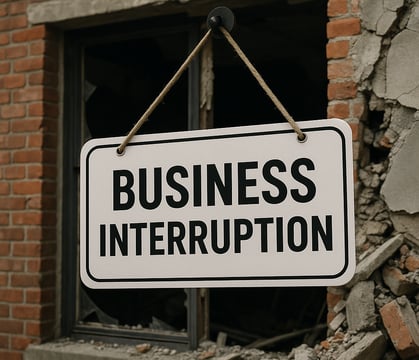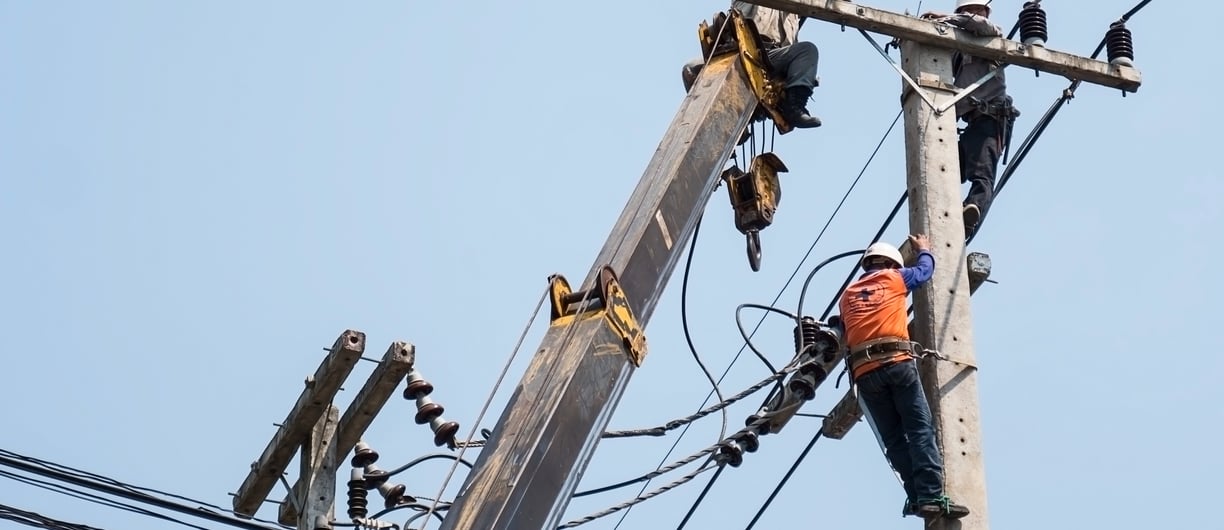Latest News Updates
Stay informed with our comprehensive collection of news articles covering various topics and trends.
Chicago Bears Refocus Stadium Plans on Arlington Heights
After months of speculation, the Chicago Bears have shifted their attention back to a suburban site in Arlington Heights, stepping away from plans to build a domed lakefront stadium in the city. Here's what that means for Chicago fans and taxpayers.


A Pivot Away from the Lakefront
On May 23, 2025, the Chicago Bears organization confirmed they are refocusing their stadium development efforts on a 326-acre site in Arlington Heights, which the team purchased in 2023. This marks a shift away from a previously floated idea to build a $4.7 billion lakefront domed stadium near Soldier Field.
The lakefront concept—backed by renderings and preliminary discussions—faced pushback from Illinois Governor JB Pritzker and key legislators who were hesitant to commit taxpayer dollars. Without state support, the Bears are choosing to pursue a path of ownership and autonomy in the suburbs.
Why Arlington Heights?
Team President Kevin Warren emphasized the benefits of the Arlington Heights location, citing its ample space, suburban infrastructure, and long-term development opportunities. The plan envisions not just a stadium but a full entertainment district with hotels, restaurants, retail, and green space.
"This is more than a stadium—it’s a multi-generational investment in our fans, our team, and the greater Chicagoland area," Warren said in a press statement.
Economic and Political Implications
The city of Chicago risks losing a major tourism and tax revenue driver. The current lease at Soldier Field runs through 2033, but the Bears may exit early if the Arlington Heights deal progresses quickly.
Meanwhile, the city must consider next steps for Soldier Field and the broader Museum Campus if the team departs. Some city officials have expressed disappointment, while others are eager to repurpose the space for public and cultural use.
What’s Next?
The Arlington Heights proposal still requires zoning approval and community input. Groundbreaking could begin as early as 2026, with an opening season projected around 2030.
Outdated Cyber Insurance Is Putting Small Businesses at Risk
In 2025, small businesses are the top target for phishing, wire fraud, and ransomware. But many are relying on outdated cyber policies—or worse, none at all. Here’s how to know if your insurance is ready for today’s digital threats.


Small Business, Big Target
According to the FBI, nearly half of all cybercrime reports now involve businesses with fewer than 100 employees. Attackers know these organizations often lack in-house security teams and are more likely to click a suspicious link or miswire funds.
Common threats include:
Business email compromise (BEC)
Ransomware
Data breaches involving client or donor information
Impersonation of leadership or vendors
Coverage Gaps You Can’t Afford to Miss
Not all cyber policies are created equal. Many general liability or property policies specifically exclude cyber-related losses. Worse, some stand-alone cyber policies haven’t been updated to reflect today’s threats.
Top gaps to check for:
Does your policy cover social engineering fraud or wire transfer losses?
Is third-party liability included (e.g., exposure of donor/client data)?
Do you have business interruption coverage from a cyber event?
Is cyber extortion (ransomware) covered with real-time response support?
The IT vs. Insurance Disconnect
Even organizations with an IT team may be exposed. IT defends the network, but insurance covers the financial fallout—and the two don't always align. You need both.
What to do:
Share your cyber policy with your IT provider or MSP for review
Conduct a cyber insurance audit annually
Ask your agent to walk you through a sample breach scenario
Final Thoughts
Cyber threats are evolving faster than most policies. Make sure yours isn’t stuck in 2020. A quick review now could save you six figures later.
Business Interruption:
Hidden Gaps in Your Property Insurance Could Delay Business Recovery
Most business owners think they're covered—until they file a claim. Rising construction costs and policy gaps have left many commercial properties underinsured, especially when business interruption is involved.


Your Building May Be Underinsured and You Don’t Even Know It
If you haven’t updated your property valuation in the last 12–18 months, there’s a good chance your coverage no longer reflects true rebuilding costs. Between inflation, labor shortages, and material price hikes, commercial construction costs have surged.
What that means:
You may only receive a portion of what it costs to rebuild
Insurance-to-value ratios could trigger co-insurance penalties
Your claim could stall while valuations are re-verified post-loss
Business Interruption: More Complex Than It Seems
Business income (BI) coverage is meant to keep your operation afloat during repairs—but only if it’s set up correctly. Many small businesses underestimate how long it will actually take to recover.
Common BI triggers and issues:
Delayed rebuilds due to permitting or materials
No coverage for utility shutdowns or off-site property losses
Inadequate limits or time periods (e.g., only 60 or 90 days)
Tip: Your BI period should reflect worst-case rebuild and re-opening timelines, not best-case hopes.
What You Can Do Today
Get a commercial property appraisal or valuation review
Check if your policy uses Replacement Cost or Actual Cash Value
Confirm your business income limits and duration are realistic
Review ordinance or law endorsements (for code upgrades)
Final Thoughts
Even the most detailed disaster plan won’t matter if your coverage can’t fund your recovery. A 20-minute policy audit now can help you avoid costly surprises later.
Schedule a Commercial Property Coverage Review and make sure your business can bounce back—not just rebuild.
EPLI Is No Longer Optional: Why Small Businesses Are Facing More Hiring & Firing Claims
Employment-related lawsuits are on the rise—and small businesses are squarely in the crosshairs. If you hire, fire, manage, or discipline employees, you need EPLI (Employment Practices Liability Insurance). Here's what’s driving the risk in 2025.


Small Businesses Are Being Sued Like Big Ones
From wrongful termination to harassment and wage disputes, employees are more aware of their rights—and more willing to take legal action. What used to feel like “corporate” problems are now hitting companies with 5, 10, or 50 employees.
Top claims include:
Wrongful termination
Discrimination (age, race, disability, gender, etc.)
Retaliation after raising complaints
Failure to promote
Wage and hour disputes
Even nonprofits are at risk, especially if they rely on volunteers or part-time staff with unclear job boundaries.
What EPLI Actually Covers
EPLI provides defense costs and settlements for covered employment-related claims. Even if a claim is baseless, defense costs alone can exceed $50,000.
Typical policy benefits include:
Attorney fees and court costs
Settlements and judgments
Coverage for leadership, HR, and supervisors
Optional third-party coverage (e.g., claims by vendors, volunteers, clients)
Why Claims Are Rising in 2025
Hybrid workplaces have increased confusion about policies and oversight
DEI efforts have raised expectations—and scrutiny
Social media has made complaints more visible
Employee handbooks are outdated or inconsistent
What You Can Do Now
Review your hiring/firing procedures with legal counsel or your agent
Make sure managers are trained on consistent documentation
Update your employee handbook to reflect current law and expectations
Ask whether your general liability policy includes or excludes EPLI (many don’t!)
Final Thoughts
You don’t need a large workforce to face a large claim. EPLI helps you protect your mission, leadership, and bottom line—even if you’re doing everything right.
Request an EPLI Quote or Policy Review and protect your business from one of today’s most common legal exposures.
Cost-Effective Employee Benefits That Also Help You Stay Compliant
Rising benefit costs and evolving compliance requirements can put small businesses in a bind. Here are practical, affordable benefit strategies that meet employee expectations and regulatory obligations in 2025.


The Balancing Act: Value vs. Cost
Small businesses want to offer competitive benefits, but high premiums and complex regulations make that tough. The good news? You don’t need a Fortune 500 budget to offer high-impact perks that keep you compliant with ACA, ERISA, and other federal/state mandates.
Key concerns for small businesses in 2025:
ACA affordability rules
ERISA documentation requirements
Health plan nondiscrimination testing
HIPAA privacy and data security
Cost-Controlled Benefits That Work
Level-Funded Health Plans – Predictable monthly costs with the potential for year-end savings and detailed utilization reporting.
ICHRA (Individual Coverage HRA) – Let employees choose their own ACA-compliant plans while you set the budget.
Telehealth and Virtual Mental Health Services – Affordable, high-usage benefits with minimal administrative complexity.
Voluntary Benefits – Let employees opt into dental, vision, disability, or accident coverage at group rates with little or no employer contribution.
Compliance Doesn’t Have to Be Complicated
Many small groups get tripped up by missing documents, outdated Section 125 plans, or COBRA rules. The right broker or benefits advisor can help you:
Ensure all required ERISA documents (SPD, SBC) are in place
Properly distribute compliance notices (CHIPRA, Medicare Part D, etc.)
Stay on top of nondiscrimination testing and ACA safe harbor calculations
The Hidden Cost of Getting It Wrong
Fines for noncompliance can reach into five or six figures—even for businesses under 50 employees. Inconsistent benefit structures or outdated plan docs can trigger audits and lawsuits.
Final Thoughts
Smart benefit strategies don’t just save money—they keep your business protected. A few small adjustments now can boost employee satisfaction and reduce your regulatory risk.
Request a Small Group Compliance + Benefits Review to see where you stand and what’s possible.
Protecting Your Purpose: Why D&O Liability Insurance Is Essential for Nonprofit Boards
For many nonprofit board members, serving a mission-driven organization is a labor of love. But even good intentions can lead to legal exposure. Directors and Officers (D&O) liability claims are increasingly common in the nonprofit sector—and they often target unpaid board members personally.


What Does D&O Insurance Cover?
D&O insurance protects board members and executives from personal financial loss resulting from lawsuits or claims alleging wrongful acts in their role as a director or officer. For nonprofits, this includes:
- Misuse of funds or breach of fiduciary duty
- Employment-related claims (e.g., harassment, discrimination)
- Allegations of mismanagement, defamation, or misrepresentation
- Regulatory investigations or noncompliance with state/federal laws
Importantly, D&O coverage includes defense costs, which can be significant—even if no wrongdoing is found.
Common Risks for Nonprofit Boards
1. Mismanagement of Funds
Boards are responsible for ensuring donations and grants are used as intended. Even accidental misallocation can trigger legal action from donors, beneficiaries, or regulators.
2. Employment Practices Liability
Claims involving wrongful termination, retaliation, or discrimination are among the most frequent and costly D&O claims. Many nonprofits are surprised to learn these often fall under D&O if a separate EPLI policy is not in place.
3. Breach of Fiduciary Duty
Board members must act in the best interest of the organization. Conflicts of interest, self-dealing, or failure to act on important decisions can lead to legal trouble—even without malicious intent.
4. Third-Party Lawsuits
Outside vendors, community partners, or donors may allege negligence, misrepresentation, or breach of contract. These claims can name individual board members directly.
5. Regulatory Investigations
State charity regulators or the IRS can investigate nonprofits over compliance issues, including incorrect Form 990 reporting or charitable registration violations. Even if the board is cleared, legal defense costs can be crippling.
6. Cyber & Data Breaches
If a nonprofit stores donor or client data, a cyber breach could result in claims of board-level negligence in protecting that information. D&O coverage may respond to lawsuits alleging oversight failures.
Why General Liability Isn’t Enough
Many nonprofits believe their general liability or umbrella policy protects their board. It doesn’t. General liability covers bodily injury and property damage—not allegations of mismanagement or fiduciary breaches. Only a dedicated D&O policy provides that protection.
Moreover, not all D&O policies are created equal. Some exclude volunteers or only cover the entity—not the individuals. Look for coverage that includes:
- Duty-to-defend provisions
- Coverage for volunteers, employees, and directors
- Advancement of defense costs
- Broad definition of “wrongful acts”
A Culture of Governance Starts with Coverage
D&O insurance isn’t just about risk transfer—it signals a culture of responsibility and governance. Having this protection in place can:
- Attract qualified board members
- Strengthen your credibility with funders
- Provide peace of mind for your leadership team
For small to midsize nonprofits, premiums are typically affordable—especially compared to the cost of a single claim.
Final Thoughts
Even with the best intentions and practices, nonprofit boards face real legal exposure. D&O insurance is not a luxury—it’s a necessity. Without it, both your organization and your board members are vulnerable to costly legal challenges that can derail your mission.
If your nonprofit isn’t sure whether it has adequate D&O coverage, or if your current policy has gaps, let’s schedule a review. We’ll help you protect the people who protect your purpose.
Workers’ Comp Tips That Could Save You from a Surprise Audit Bill
Many small businesses get blindsided by unexpected workers’ comp audit bills. Whether it’s misclassified employees, missing paperwork, or underestimating payroll, here’s how to stay ahead of the curve in 2025.


Why Workers’ Comp Audits Are So Common
Your premium is based on estimated payroll—and if that estimate is too low or improperly categorized, the insurer will correct it after the fact. That’s what the year-end audit is for. But if you’re not tracking changes throughout the year, the final bill can be a shock.
Common audit triggers include:
Payroll growth or seasonal spikes
Hiring subcontractors or 1099 workers
Incomplete documentation
Using incorrect employee classification codes
Simple Ways to Stay Compliant and Save
Track Payroll Monthly – Compare your estimates to actuals and alert your agent if you see big changes.
Use Correct Classification Codes – Each job type has its own risk rate. Misclassification can lead to overcharges—or penalties if you're underpaying.
Keep Certificates of Insurance (COIs) – If you hire subcontractors, make sure they have their own coverage. If not, their payroll may be added to your audit.
Report Claims Promptly and Accurately – Delayed or vague injury reports can raise red flags.
Bonus Tip: Consider Pay-As-You-Go
Some insurers now offer pay-as-you-go billing based on actual payroll instead of estimates. This can reduce audit exposure and improve cash flow predictability.
Preventing Costly Surprises
Don’t assume your accountant or bookkeeper is managing this—have a system in place
Review your annual audit results for trends and disputes
Work with an agent who understands your business and helps proactively adjust as you grow
Final Thoughts
Workers’ comp isn’t just about claims—it’s also about documentation, planning, and communication. Staying audit-ready all year long puts you in control.
Book a Workers’ Comp + Audit Risk Review to make sure your business won’t get caught off guard.
The news articles are always insightful and keep me updated on the latest trends and events.


★★★★★
Transforming small business consulting with dynamic energy.
Service
Trust
(312) 220-9200
© 2025. All rights reserved.


141 W. Jackson Blvd. | Suite 1502 | Chicago, IL | 60604






